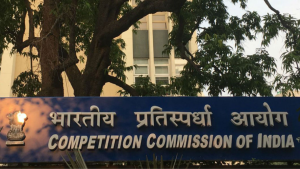

Are Judicial Statistics Just Another Sheet of Paper in the Pile?
- /
- Articles and Blogposts /
- Are Judicial Statistics Just Another Sheet of Paper in the Pile?
The Supreme Court of India recently released its Annual Report for the year 2017-18. For those interested in judicial statistics for the High Courts, this is considered to be one of the few sources where one can find information regarding the nature of cases instituted, disposed, and pending in all the High Courts. However, a close look at the data over a period of time unearths a worrisome state of affairs vis-à-vis the statistics.
The past three Annual Reports of the Supreme Court contain a break-up of the statistics regarding the workload of the High Courts. For example, in the recent annual report, we have the following information for each High Court: the number of cases that were pending before the court on 1 July 2017, the number of cases instituted, the number of cases disposed, and the number of cases pending as of 30 June 2018. The previous two reports also contain the same information for earlier time periods. While attempting to understand how the courts have been functioning over the years, I began collating statistics from the three annual reports which have this data (annual reports for the years 2015-16, 2016-17, and 2017-18). However the analyses I was attempting hit a roadblock when there were noticeable inconsistencies in the data. For example, see below the number of pending civil appeals in the High Court of Calcutta as provided in the three annual reports:
Figure 1. Civil Appeals – High Court of Calcutta
Annual Report 2015-16 |
Annual Report 2016-17 |
Annual Report 2017-18 |
Pendency (as on 01.07.2015) |
Pendency (as on 30.06.2016) |
Pendency (as on 01.07.2016) |
Pendency (as on 30.06.2017) |
Pendency (as on 01.07.2017) |
Pendency (as on 30.06.2018) |
39,241 |
42,275 |
71,566 |
75,109 |
48,335 |
51,111 |
Figure 1 shows a jump and later drop of about 30,000 pending civil appeals across the three annual reports. Surely it cannot be that so many cases were disposed on 30 June 2016 and a similar number of cases were later instituted on 1 July 2017. Similarly, Figures 2 and 3 below show inconsistencies in the number of MACT matters and other civil cases before the High Court of Allahabad in the past two annual reports:
Figure 2. MACT matters pending at the High Court of Allahabad
| Annual Report 2016-17 | Annual Report 2017-18 |
| Pendency (as on 01.07.2016) | Pendency (as on 30.06.2017) | Pendency (as on 01.07.2017) | Pendency (as on 30.06.2018) |
| 15,663 | 15,667 | 61,686 | 61,809 |
Figure 3. Other civil cases pending at the High Court of Allahabad
| Annual Report 2016-17 | Annual Report 2017-18 |
| Pendency (as on 01.07.2016) | Pendency (as on 30.06.2017) | Pendency (as on 01.07.2017) | Pendency (as on 30.06.2018) |
| 1,06,222 | 1,06,496 | 60,477 | 57,502 |
Figure 2 and 3 show a jump in the number of pending cases between 30 June 2017 and 1 July 2017. There are several other examples of data inconsistencies between the three reports. It is unclear why these inconsistencies exist – it could be an error or a rejig of the categories that cases could fall under, in any case, a disclaimer must be provided explaining the difference in the data to prevent an incorrect analysis of the judiciary’s functioning.
Inaccuracies in such data is the reason why data platforms such as the NJDG are crucial in ensuring transparency regarding the functioning of the judiciary. The NJDG for High Courts was recently introduced so as to make available data regarding the High Courts, however data for the High Courts of Bombay, Delhi, Madhya Pradesh and Karnataka is currently incomplete as these High Courts are yet to shift to CIS NC 1.0 developed by the E-Committee of the Supreme Court. In any case, the NJDG for High Courts has a lot of scope for improvement when compared with the NJDG (for subordinate courts).
In order to ensure that the annual reporting of High Court statistics is accurate, it would help if the categories of cases as shown in the annual reports can be replicated on the NJDG – this will help track the progress of such cases for all stakeholders. Further, if the NJDG can implement a feature to reflect the data as on a particular date, it can act as a check to the data being submitted by the High Courts to the Supreme Court for its annual report. The benefits of collecting and maintaining big data are well known, however ensuring that it is used by the system to introspect and understand its working is even more crucial, therefore it is imperative that such vital statistics not remain unseen or unchecked.
The views expressed in this article are solely those of the author’s and they do not represent the views of DAKSH.

Shruthi Naik
RECENT ARTICLES


Judicial discipline or lack thereof in NCLT and NCLAT

Year in Review: NCLT and NCLAT Under the Supreme Court’s Microscope

Testing the Waters: Pre-Implementation Evaluation of the 2024 CCI Combination Regulations

-
Rule of Law ProjectRule of Law Project
-
Access to Justice SurveyAccess to Justice Survey
-
BlogBlog
-
Contact UsContact Us
-
Statistics and ReportsStatistics and Reports
© 2021 DAKSH India. All rights reserved
Powered by Oy Media Solutions
Designed by GGWP Design